Copyright © 2020 Philip Bouchard
www.bouchardpaintings.com
PHILIP BOUCHARD
Philip Bouchard
Phone + 44 7798 798 382
Email: bouchardpaintings@yahoo.co.uk




Introduction:
It was D.H. Lawrence who said never trust the artist, trust the tale. For 20 odd years Anglo-
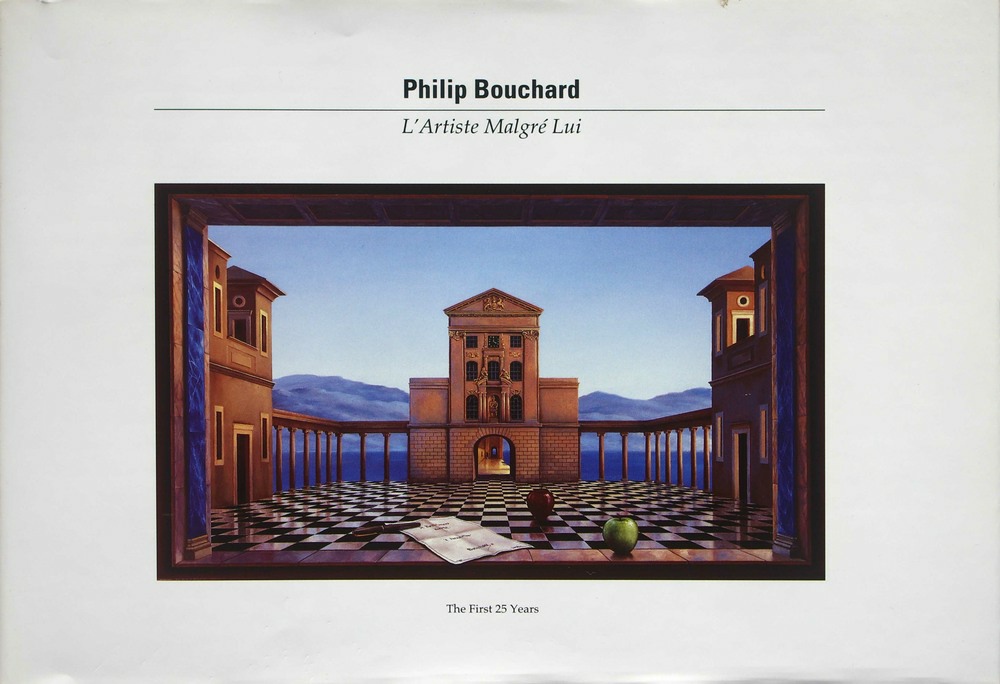
L'Artiste Malgré Lui is an apt title indeed. Bouchard, a bubbly breathless man who switches tempo with the frequency and allure of a Mozart symphony, could be an off-
"Through sociological conditioning I assumed I was painting for a bit of fun. But looking back I found I was actually saying things. Even if you lie on canvas you are still telling the truth about yourself," says Bouchard.
Every artist embarks on a personal voyage of discovery, but Bouchard's odyssey is unique not because it was an especially turbulent or bizarre journey but because it happened at all. Bouchard was not a child prodigy with a flair for art and a string of scholarships. The image of the artist appalled him and he seemed quite content to carve a staid existence in business until this gift arrived overnight while Bouchard was studying modern languages at London University.
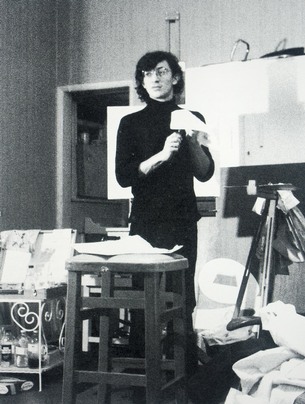
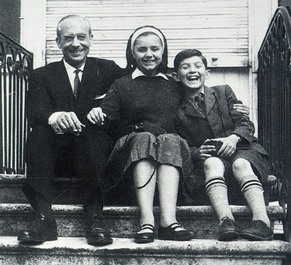
Bouchard in his studio (1974) Photograph by Dorothea Shertl
Bouchard on Holiday in Bordeaux aged 9 with father & sister Patricia
"What scared me was that I had no art training. It just fell from the sky. I was frightened that this talent would go just as fast as it came. One day I wasn't painting, the next day I was. That worried me."
The most remarkable aspect of Bouchard's ability with the brush is his eye for perspective, depth and symmetry. Chess squares, pantheon pillars and a polished arches bestride his magical world. Imagination and mystery can strike at any time but his technical, constructive ability would normally stem from years of training and practice, in the manner of the old masters who created the great alterpieces only after years of apprenticeship. He has worked hard on his technique.
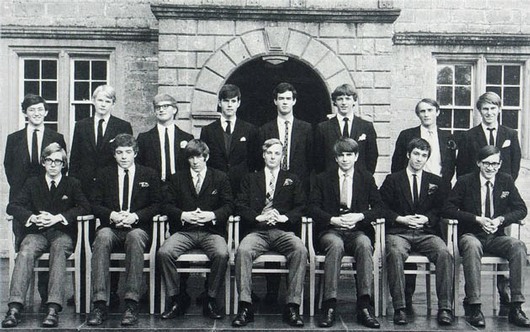
Downside School 1969 (Bouchard back row -
"Learning to paint is like learning a language. The greater your mastery of it, the greater your powers of expression".
He takes scribbled notes of his paintings. His initial sketches look like a trigonometry student's exercise book. He needs to refer back lest he goes away on holiday and returns to find he has forgotten how to paint, yet alone what to paint. It is not just the artist's muse he is afraid of loosing, it's the basic formula.
Bouchard's first canvas 'The Family Reunion', which was commended in the 1971 International Amateur Art exhibition, is framed around four balloons sitting at a table. Behind the open dining room door Bouchard has painted a brick wall. Not profoundly significant but simply because, technically, he felt he couldn't paint the scene through the door. Similarly the painting hanging on the wall is blacked out because he didn't feel able to paint a family portrait into the empty picture frame.
"Everything I have done is the result of what I couldn't do.... I like to paint images that people understand. A door is a door, not a marshmallow".
In the formative years of his painting Bouchard used to correct those who called him an artist.
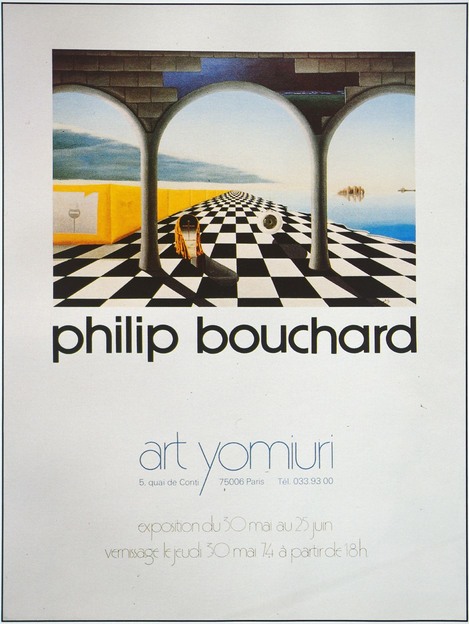
Poster from first one-
"I argued that I was just a painter. An artist to me implies some sort of philosophical undercurrent, with the art emerging from the thinking. But perhaps after all I am an artist."
Bouchard once tried to ridicule the concept of art as a proclamatory truth or the decoder of hidden meanings, painting a picture which he cheekily entitled 'The Psychological Truth about a Vegetarian Truffle'. He wanted to show how the artist, under commercial pressure, can cheat.
"Looking back it was all more serious than I thought. It seemed that in a way each painting forms part of a sentence and suddenly you've made a statement".
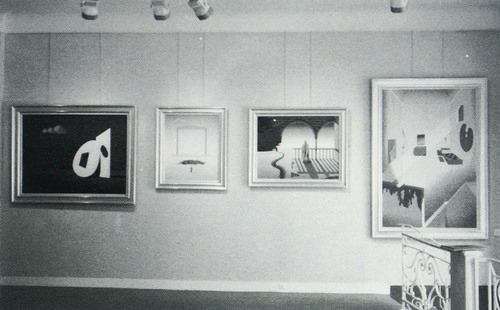
Exhibition at Galerie Art Yomiuri -
L'Artiste Malgré Lui -
A number of years ago, a great friend of mine called Marc Burca took it upon himself to have a book -